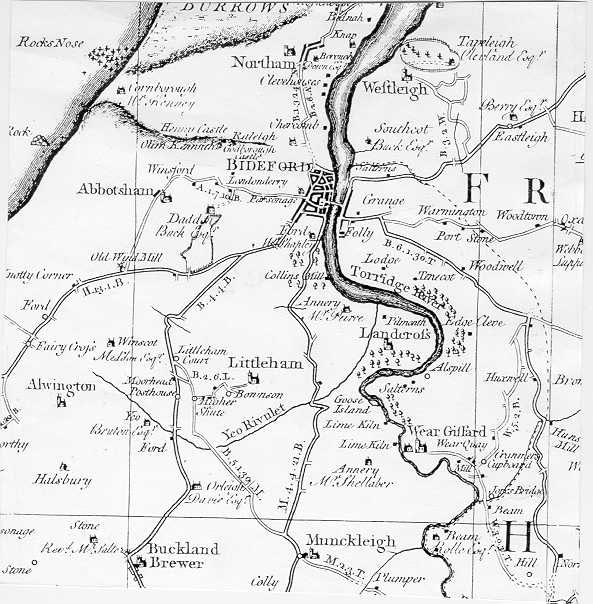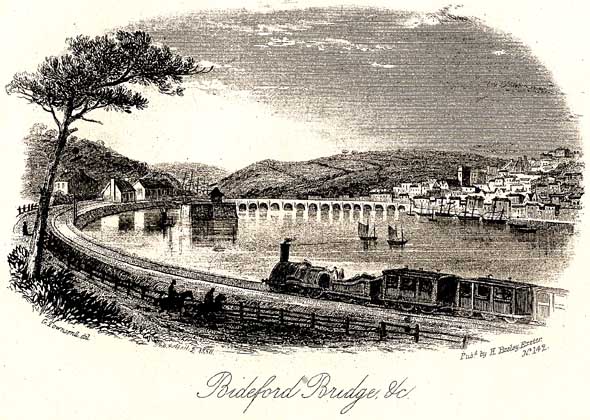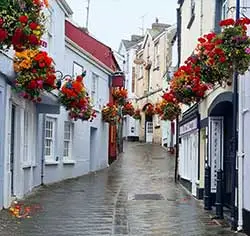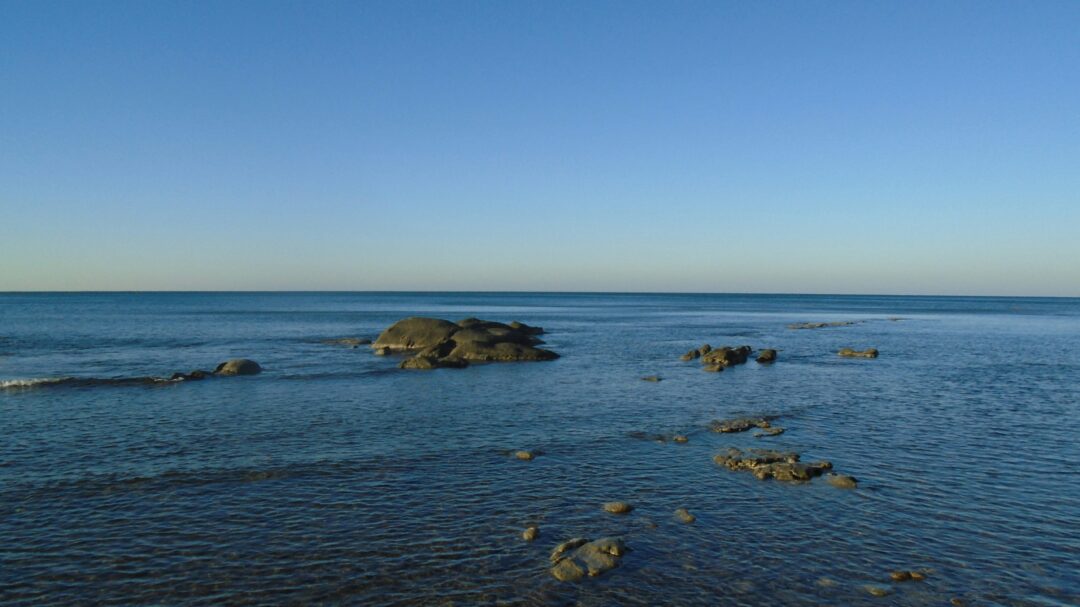This page has been lost from the Devon County Council website here and is only available in the Wayback Machine archives as a historical record. Hence being published for completeness.
Bideford is located within Torridge local authority area. Historically it formed part of Shebbear Hundred. It falls within Hartland Deanery for ecclesiastical purposes. The Deaneries are used to arrange the typescript Church Notes of B.F.Cresswell which are held in the Westcountry Studies Library. The population was 2987 in 1801 8754 in 1901 . Figures for other years are available on the local studies website.In the valuation of 1334 it was assessed at £06/00/00. The lay subsidy of 1524 valued the community at £11/06/02. In 1641/2 662 adult males signed the Protestation returns. It is recorded as a borough from 1217 and was incorporated in 1573. A turnpike was established in 1764. The community had a grammar school from 1689. A market is recorded from 1271.
A parish history file is held in Bideford Library. You can look for other material on the community by using the place search on the main local studies database. Further historical information is also available on the Genuki website

Maps: The image below is of the Bideford area on Donn’s one inch to the mile survey of 1765.
On the County Series Ordnance Survey mapping the area is to be found on 1:2,500 sheet 19/6 Six inch (1:10560) sheet 19NW
The National Grid reference for the centre of the area is SS445265. On the post 1945 National Grid Ordnance Survey mapping the sheets are: 1:10,000 (six inch to a mile: sheet SS42NW,NE, 1:25,000 mapping: sheet Explorer 139, Landranger (1:50,000) mapping: sheet 180. Geological sheet 292 also covers the area.
Illustrations: The image below is of Bideford as included in the Library’sIllustrations collections Other images can be searched for on the local studies catalogue.

Extract from: Kingsley’s country. A guide to Bideford and district. Bideford: “Gazette” Office, 1894. p. 6.
The renaissance of Bideford is principally attributable to two things: the publication of Kingsley’s romance, Westward Ho! In 1855, and the extension of the London and South Western Railway from Barnstaple in 1856. There are other subsidiary causes for the revival of prosperity, and these will be mentioned later. It must also be admitted that the local authorities of the town have been very fully alive to the turn of “the tide which, taken at the flood, leads on to fortune.” No town in the West of England has grown so rapidly, and few have been so radically improved as Bideford.
Extract from The glove is up! Devon’s historic fairs, by Tricia Gerrish, by kind permission of the author
ORIGINAL CHARTER: 1271. Charter granted by King Henry III to Richard de Grenville. 5 days at Feast of St Margaret: 20th July Bideford’s 1271 charter was the first of at least two granting fairs to this borough. The second, in 1573 from Queen Elizabeth I, confirmed St Margaret’s Fair and added two more: 4th February (later St Valentine’s) and 3rd November, each for four days. These were given to a later Richard de Grenville, who had been knighted, making him Sir Richard. In addition, a court of Pied Poudre was to be set up, governing the conduct of the fairs.
All three fairs appear in Magna Britannia and in Owen’s list, but by 1888 the Market Rights and Tolls List indicates neither fair nor market. A report from the Western Morning News in 1933 says that a suggestion to revive the ancient fair was made at the annual Bideford Manor Court. This court, set up under the Elizabethan charter, sat once a year. It had the power to appoint the Churchwardens in Bideford’s parish church, which is a very unusual circumstance. The lack of newspaper reports since World War II suggests it was unsuccessful.
Horned cattle, sheep and farm products were sold at Bideford Fair. A 1790 historian says that the fair was: ‘distinguished for nothing else than horned cattle.’ Attempts had been made to attract other types of animal sales and trading to Bideford, but these had failed due to asking excessive tolls. The mid 19th century fairs were relatively successful in trading terms. Prime animals and full prices are recorded by Bideford Gazette. Fat bullocks fetched 11/- per score: cows with calf £10 to £16 each in 1860. Saint Valentine’s Fair was very popular with locals and countryfolk in those days. There was often unscheduled entertainment. In 1847 a horse omnibus, bound for Torrington, and loaded with homebound fairgoers, got too close to the edge of Bideford Quay in the crowds. It fell in the Torridge, drowning eight people. Earlier in the century, an 1825 newspaper report tells of two navigators (navvies) put in the stocks at Bideford’s St Valentine Fair, as a punishment for having assaulted a female the day before. They were treated by fairgoers as part of the day’s entertainment and thoroughly pelted with rubbish. By 1892 however, Bideford Fair was almost defunct. To quote a Bideford reporter: ‘all that remains of Bideford Fair was celebrated yesterday by the appearance in Bideford Corn Market of Mrs Thornby’s fairing stall. Saint Valentine’s Day itself: the proper day for the fair – receives but scant attention.’
Extract from Devon by W.G.Hoskins (1954), included by kind permission of the copyright holder:
BIDEFORD the most attractive town in North Devon, lies on a hillside rising sharply from the W. bank of the Torridge where it begins to widen into its estuary (Plate 21). On the E. bank, joined to the town by a stone bridge of twenty-four pointed arches, is the suburb of East-the-Water, which is itself an old place. It probably arose when the bridge was built, shortly before 1300.
It is probable that both Barnstaple and Bideford bridges, the two most famous bridges in North Devon, were first constructed in the last quarter of the 13th century The earliest bridge at Bideford was of oak timber, and the first stone bridge (c. 1460) was built over and around this wooden bridge, which was used as scaffolding. Repair work before the widening of 1925 brought much of this timber to light from inside the masonry. The variation in the span of the stone arches from 12 ft. to 25 ft., and hence in the thickness of the piers, arises from their being built around the arches of the wooden bridge, which in turn varied according to the length of the oak-timber used in the lintels. The present bridge is substantially the 15th century structure, though it has been widened more than once. It is managed by a body of trustees or feoffees, out of an income derived mainly from property in Bideford (cf. Bridgeland Street). Not only does the bridge maintain itself but its surplus revenue has from time to time enabled the trustees to initiate and support numerous schemes and improvements in the borough, above all, perhaps, the maintenance of the grammar school. (Whiting, The Long Bridge of Bideford 18-19)
Bideford was a place of little consequence until Elizabethan times. It grew up beside a ford over the Torridge, and was given by William Rufus to the Grenvilles. From this time until 1744, Bideford remained their property. (R.H., 559; Lysons, 51) The town owes a great deal to the Grenvilles. Richard de Grenville made a borough of it before 1217, (D.C.N.Q, 24 (1951), 204) and a later Grenville obtained a market and a five-day fair (probably a confirmation) in 1271. Bideford was, however, entirely over-shadowed by Barnstaple until the late 16th century, and was a place of no more than local importance, chiefly notable for shipbuilding (as Leland tells us) and fishing.
By 1573 the town had grown sufficiently to receive a charter of incorporation from the Queen, at the instance of the great Sir Richard Grenville. Sir Richard’s colonisation of Virginia and Carolina led to the establishment of a considerable American trade at Bideford, which lasted for some 200 years until the American colonies achieved their independence. By Charles I’s time the Bideford merchants were importing wool from Spain for the flourishing Devonshire textile industry, later extending their commerce to Holland, France, and the Mediter- ranean. Bideford Quay was first built in 1663 by the corporation. By the end of the 17th century the town had a large share in the Newfoundland trade, sending out more ships in 1699 than any other port except London and Topsham. Above all, it was the tobacco trade with Maryland and Virginia which made the largest Bideford fortunes, a trade which was at its height c. 1680-1730, and ceased about 1760. It was during this period that Bideford became the leading port in North Devon, far surpassing its ancient rival of Barnstaple. The handsome houses in Bridgeland Street (c. 1690- 1700) and the Royal Hotel, at East-the-Water, formerly a merchant’s house, testify to the wealth of these days. One after another, however, Bideford’s over-seas trades dwindled or collapsed, mostly as a result of the incessant wars of the 18th century, and partly because of the collapse of the woollen industry in the county. By the early 19th century only a coasting trade remained.
The town revived during the course of the 19th century and grew steadily in numbers, more than doubling in size between 1821 and 1901. To-day it has rather more than 10,000 people, and is an active and cheerful town, with a good market and shops. Its foreign trade revived, on a small but useful scale, after the Napoleonic Wars. From the 1830s onwards it also developed a considerable emigrant traffic to America, with four first-class emigrant ships sailing regularly to America and elsewhere in the 1840s and 1850s. (Whites Directory) The ancient shipbuilding industry was carried on vigorously throughout the century, down to the present day. Many of the local industries that flourished in the 19th century (potteries, lime-burning, breweries, etc.) have now gone or declined, but others have taken their place; and the town is now becoming known as a holiday centre and a good place to retire to in one’s old age.
Although Bideford has such a long history and looks so attractive from any viewpoint, it is less interesting architecturally than might be expected. Much of the town is Victorian, built of the rather unpleasing local yellow brick, but there are some good things left. Most interesting of all is Bridgeland Street, which was laid out by Nathaniel Gascoyne about 1690-1700, planned from the start as a wide street lined with merchants’ houses,’ Several of these houses, especially Nos. 1,4, 12, and 28, are good examples of their period; others have been refronted with stucco or rebuilt in the late 18th or early 19th century. The other old streets contain little beyond some plain late Georgian building, of which the New Inn Hotel is a pleasant example. The old workhouse was built 1835-6 and is attributed to Sir Gilbert Scott.
The parish church (St. Mary) was rebuilt in 1865, except for its plain 4th century tower, and has lost most of its character. It contains a fine late-Norman font, the canopied tomb of Sir Thomas Grenville (1513), a tower screen of handsomely carved late 16th century panelling, and some good mural monuments to the 17th to 18th century merchants of the town.
Across the river, the Royal Hotel embodies (at its N. end) the original town house of John Davie, an eminent merchant, built in 1688. The front has been altered, but the interior contains a good late 17th century staircase and two fine plaster ceilings on the first floor. Charles Kingsley is said to have written part of Westward Ho! here.

Our newsletter is packed with helpful tips and resources to help you mazimise your time in & around Bideford. Sign up now and join our community of savvy Bideford’ers.
About the Author
Welcome to Bideford.com! I’m Jason Jr, a seasoned explorer and avid fan of Bideford and the broader North Devon area. With over a decade of consistent family visits, virtually every weekend, I’ve immersed myself in the rich history and vibrant culture Bideford & North Devon.
On this site, you’ll find a wealth of knowledge amassed from my adventures here. From in-depth local guides to engaging blog posts about Bideford. Whether you’re looking for recommendations on things to do or guidance on where to stay we have you covered. Join me as we delve into the heart of Bideford, North Devon – a town that’s more than just a destination, but an experience waiting to be discovered.
Do you want to see your favourite Bideford attraction, place to stay, event or activity listed here? Contact Us!






